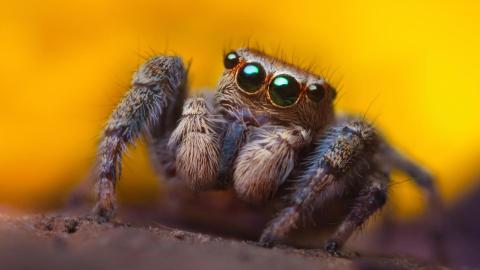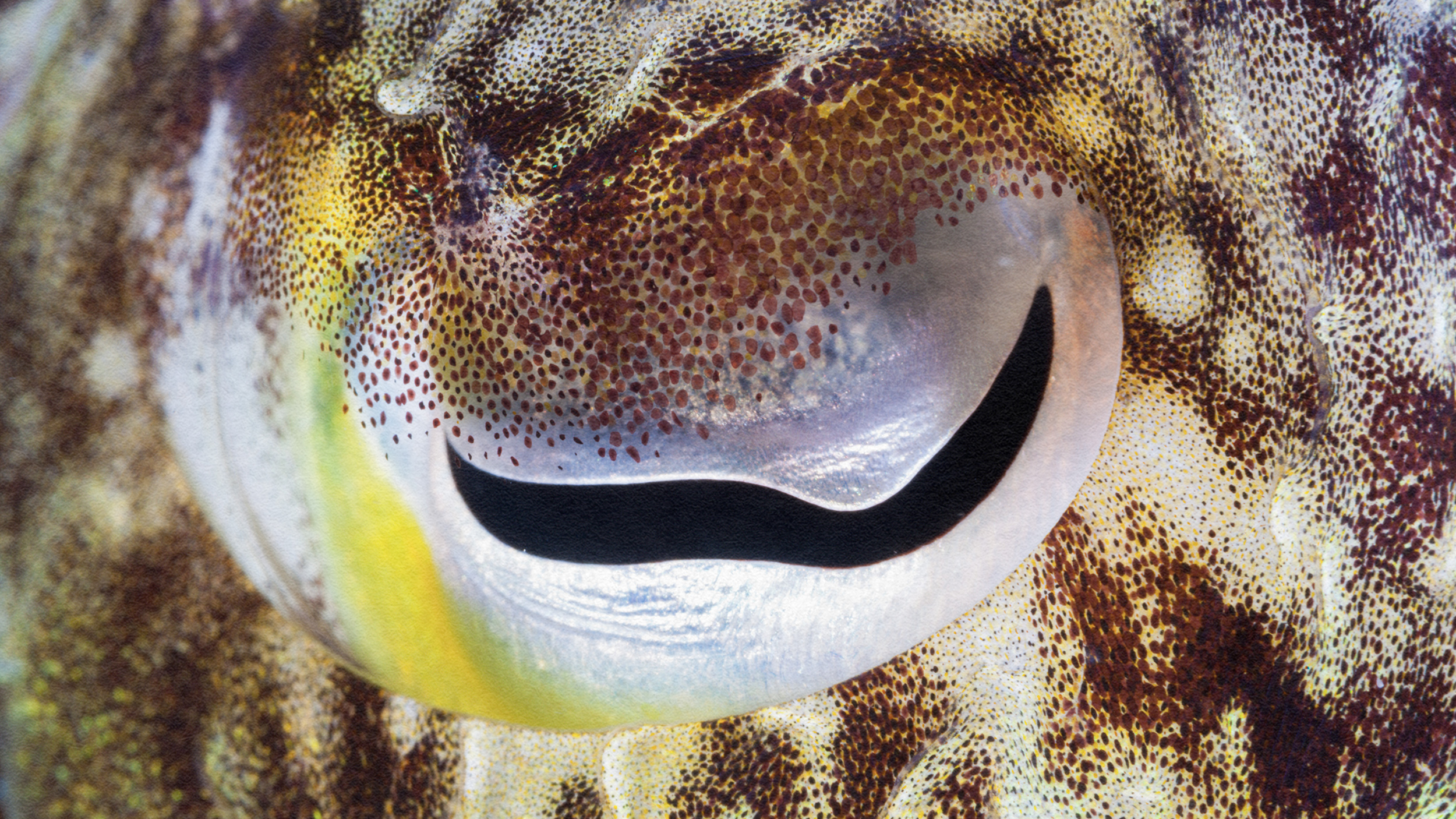- The ability to distinguish lifelike and non-lifelike movements is an important survival skill.
- Harvard scientists discovered that at least one invertebrate can do this.
- Scientists tested jumping spiders as they watched an animation and scuttled about on a floating treadmill.
The ability to discern living beings from inanimate objects is a useful skill. Lifelike movement is an important clue here: living things have a distinct way of moving that inanimate objects do not.
We know that this ability to distinguish the living from the non-living is common among vertebrates, but now a new study from Harvard scientists demonstrates that at least one invertebrate can do it, too. It’s the jumping spider, the one with two big eyes and three little ones on either side.
The jumping spider’s ability to readily identify living objects based on movement raises a larger question: is this a trait that’s widespread among animals? The peculiar method the researchers used for their arachnid subjects may be of use in finding out.
Follow the dots
From previous human experiments, it was known that if a group of dots is animated to resemble the movement of human joints, we perceive that they represent a moving human. If the dots are still or move in a weird way, we simply perceive them as dots.
For this study with jumping spiders, the authors implemented a similar technique. Using a bunch of dots on a display screen, the researchers created ten animations. from these dots. (In most cases, the authors used dots, though they sometimes used other shapes, including a spider silhouette.) Some of the animations resembled spiders scurrying across the screen; others dots moved in a random manner.


To get the spiders to look at the animations, the researchers devised a sphere-based treadmill. Each spider was placed on a small platform atop a polystyrene ball floating on a cushion of air. The spider, resting on its cephalothorax, could “walk” in any direction as it responded to an animation. Really, though, it was staying put and actually just experiencing the illusion of movement as it moved the floating ball with its feet.
The researchers tested their dots on 60 jumping spiders of the species Menemerus semilimbatus, which were selected because of their unusual visual system. Their two large central eyes are understood to be the most capable, but they lack a wide field of vision. That’s where the secondary eyes that wrap around the head come in. When these secondary eyes spot something interesting, the spiders direct their two large eyes toward it for a closer look.
This is exactly what happened when the spiders were shown an animation that moved in an unfamiliar, non-lifelike way. They appeared concerned. They swung their two large eyes toward these incomprehensible objects, apparently in an effort to make sense of them. This was especially true when they were shown animations exhibiting totally random, nonsensical movement.
However, for animations that moved like a living creature, the spiders remained still.
As the study’s lead author, Massimi De Agrò, recalled, “The secondary eyes are looking at this point-light display of biological motion and it can already understand it, whereas the other random motion is weird and they don’t understand what’s there.”
De Agrò says that their unique treadmill should allow the researchers to test whether insects, mollusks, and other invertebrates also have the ability to recognize “living” dot patterns.






